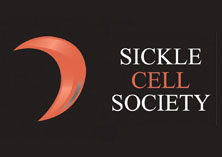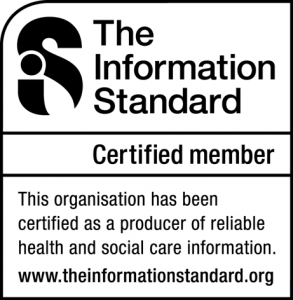A letter to Universal Studios regarding Ted 2
The following is the text of a letter sent to Larry Kurzweil, president of Universal Studios
Dear Mr Kurzweil,
Re: TED 2 – United Kingdom release date 07 July 2015
Having received numerous calls and comments about elements of your new film TED 2, I am now writing to make a formal complaint regarding the misrepresentation of Sickle Cell Disorder as depicted in TED 2.
Let me say at the outset that I am a regular cinema goer and whilst film makers naturally have artistic licence, it is simply wrong to portray misleading and inaccurate information about a global genetic blood such as Sickle Cell. It is neither artistic nor funny.
Whatever merits the film has, it has been let down by a clear lack of understanding and awareness of Sickle Cell, which suggests that there was limited research or conversations with people who live with Sickle Cell or their families. Below are two quotations we have received from people who live with Sickle Cell about TED 2;
“My husband has the disease and I carry the trait – all of our children are perfectly healthy. I surely won’t be watching that film thanks for the heads up”
This is a disagrace and an insult to us all. How ignorant can one be! They should have done their research well before coming out with such a joke of a film!.
The film makes serious factual errors about Sickle Cell, wrongly assumes it is restricted to African-Americans, and confuses Sickle Cell trait (the genetic carrier state) and Sickle Cell Disorder. These are issues that require careful explanation and we have expanded upon these issues in the enclosed briefing note.
The film’s serious factual errors also hints of both racism and disability in relation to Sickle Cell Disorder. Surely this is not was intended.
Having reflected on this carefully and discussing it with some of our supporters who live with Sickle Cell Disorder, I believe Universal Studios should publicly acknowledge that depicting Sickle Cell in a way that that both stigmatises and pokes fun at people living with Sickle Cell for commercial profit is , in my view, both crass and unethical. Rather than Universal Studios taking the opportunity to raise the profile and accurate depiction of Sickle Cell, the film is unfortunately factually misleading for many people who live with Sickle Cell and indeed those who are not aware of Sickle Cell.
I have copied this letter to the main human star of the film Mark Walhberg and would also be interested in any comments he has to make.
I have also copied this letter to Professor Swee Lay Thein who is one of the foremost global experts on Sickle Cell who is based at the USA National Heart, Lung and Blood Institute, National Institutes of Health.
I look forward to hearing from you.
Yours sincerely,
John James
Chief Executive
cc- Professor Swee Lay Thein USA National Institutes of Health
Mark Walhberg- Universal Studios Hollywood
BRIEFING NOTE:
Sickle Cell Disorder (SCD)
Sickle cell disease, sometimes called sickle cell disorder (SCD), is a serious inherited chronic illness. SCD gets its name from the red blood cells that, in someone with SCD, can take on a crescent shape, reminiscent of a sickle, the old-fashioned agricultural instrument, hence the name, sickle cell. The most common type of SCD is sickle cell anaemia, in which the person inherits a copy of the sickle cell gene from both parents, and in genetic counselling is sometimes written as HbSS. There is also a genetic carrier state where the person inherits the usual adult haemoglobin (Haemoglobin A) from one parent and a gene for sickle haemoglobin from the other parent, and this is written HbAS. A person with HbAS is said to be a sickle cell carrier, or to have sickle cell trait. In most circumstances they are not ill themselves and do not have the varied and extremely painful symptoms that someone with SCD may have.
SC inheritance 1
With this information in mind, there are several issues in which the film TED 2 both misrepresents the facts about sickle cell and discriminates against people living with SCD.
(1) The film confuses two distinct conditions, the serious inherited chronic illness SCD, and the genetic carrier state sickle cell trait. People with sickle cell trait do not have an illness or a disease, and it is therefore insulting to suggest that they do.
(2) The film assumes that sickle cell is exclusively associated with black people. The sickle cell gene is in fact an adaptation to a malarial environment. Those with one copy of the sickle cell gene (HbAS) are partially protected against severe malaria in childhood compared to those without sickle cell (HbAA). Meanwhile those with the chronic illness sickle cell anaemia (HbSS) are even more vulnerable to death from malaria. The sickle cell gene is therefore more common malarial areas of the world, including parts of West, Central and East Africa, but also in India, Eastern Saudi Arabia, and in Italy, Greece and Turkey. SCD can therefore be found in people who are White or of Arab or Indian descent. Indeed, here in the UK in in every 450 White British newborn children carries a gene associated with sickle cell. In other words white-skinned people can and do carry the sickle cell gene and can and do have SCD. On the other hand, because some parts of Africa are not malarial (South Africa, parts of Africa that are at altitude and not hospitable to the mosquitoes that spread malaria, such as the Kenyan highlands) there are also many black-skinned peoples who do not carry the sickle cell gene.
The film is therefore able to be racist in quite a complex manner. It trades on the popular misconception that sickle cell only occurs in black peoples; it confuses sickle cell trait with SCD, thereby permitting sickle cell trait to be misrecognized first as a disease, and then as a disease linked specifically to black men. The film has linked two incorrect assumptions and thereby taps in to the racist history of the USA, a history that links disease to black men, a history where, for example, African-American men were deliberately not treated for syphilis in the infamous Tuskegee experiment, or more recently, in early attempts to link risk of HIV/AIDS to African men. The film therefore subtlety invites the viewer to put the various elements of racist USA culture together for the sake of a “joke”.
(3) The basis of the “joke” about sickle cell semen being rejected is also disablist as well as racist. Again this is partly because of the confusion of SCD and sickle cell carrier status. People who are genetic carriers of sickle cell (have sickle cell trait) will not necessarily have children with sickle cell anaemia. If they have children with someone without sickle cell, there is a one-in-two chance in each pregnancy of having a child without sickle cell; a one-in-two-chance in each pregnancy of having a child who is a genetic carrier (has sickle cell trait), and thus no chance of having a child with the serious chronic illness SCD. Even if genetic carriers have children with someone with SCD, the chronic illness itself, there is only a one-in-two-chance in each pregnancy of having a child who has the illness SCD, but also one-in-two-chance in each pregnancy of having a child who has a is a genetic carrier (has sickle cell trait) and so does not have sickle cell disease.
(4) However, the film also trades on the disablist assumption that having a child with SCD it a “bad thing”. There are currently over 100,000 people with SCD in the USA, and 400,000 born globally each year. What the life of someone with SCD is like is not a given. If they are born into a society that is racist and disablist then their life chances will be lessened. If they are born into a society where treatment is made available, where racism and disablism are challenged, where they are given opportunities in schooling and in employment, then they can flourish. In short if people with SCD are not healthy and successful, this is a measure of that failure of that society as much as the nature of the illness itself. By feeding into negative and discriminatory images of people with SCD, the film reinforces prejudices against them and by doing so contributes to damaging their self-esteem and health. Part of this self-esteem is to be reassured that people with SCD can have healthy children .
SC inheritance 2
In the diagram above none of the children have inherited a chronic illness, merely a genetic carrier state.
(5) In terms of the context of the “joke”, referring to a fertility clinic, the film ignores the possibility or pre-implantation genetic diagnosis. Future parents with either SCD or who are sickle cell genetic carriers (have sickle cell trait) could, in theory, make use of pre-implantation genetic diagnosis in which embryos are screened for SCD before being implanted, thereby ensuring that parents with SCD or who are genetic carriers, do not have a child with SCD. However to do so requires that resources within society are allocated on the basis of need rather than merely on the basis of wealth.





